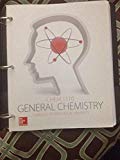
Concept explainers
- a)
Interpretation: The given complex ion
Concept Introduction:
Lewis acid: The species which accepts the lone pair of electrons.
Lewis base: The species which donates lone pair of electrons.
Donor atom: The neutral molecule or the negatively charged species which donates pair of electrons is known as Donor atom.
Coordinate covalent bonds: A covalent bond in which the Ligand donates both electrons to the metal ion to construct a bonding interaction known as coordinate covalent bond.
To Identify: The given complex ion
- b)
Interpretation: The given complex ion
Concept Introduction:
Lewis acid: The species which accepts the lone pair of electrons.
Lewis base: The species which donates lone pair of electrons.
Donor atom: The neutral molecule or the negatively charged species which donates pair of electrons is known as Donor atom.
Coordinate covalent bonds: A covalent bond in which the Ligand donates both electrons to the metal ion to construct a bonding interaction known as coordinate covalent bond.
To Identify: The given complex ion
- c)
Interpretation: The given complex ion
Concept Introduction:
Lewis acid: The species which accepts the lone pair of electrons.
Lewis base: The species which donates lone pair of electrons.
Donor atom: The neutral molecule or the negatively charged species which donates pair of electrons is known as Donor atom.
Coordinate covalent bonds: A covalent bond in which the Ligand donates both electrons to the metal ion to construct a bonding interaction known as coordinate covalent bond.
To Identify: The given complex ion
Want to see the full answer?
Check out a sample textbook solution
Chapter 22 Solutions
Chemistry: Atoms First V1
- I'm having trouble with converting lewis diagrams into VSEPR diagrams. I currently have this example of C2BrCl3 which I want to turn into a lewis structure, but I'm not sure what steps I need to do in order to do so. I have the table written down, however, there's two central atoms so what would I do? There seems to be 4 electron domains on the carbon atom and no lone pairs so it would seem like this shape would be tetrahedral. Here's what I have now. Thanks!arrow_forwardWe discussed the solid phase resin using in peptide synthesis. Provide a mechanism, for its formation. DRAW THE MECHANISM.arrow_forwardPlease help. Every time I've asked an expert in the past, it's been wrong :(arrow_forward
- Please help everysingle time ive asked in the past, the solution has been wrongarrow_forwardPlease helparrow_forward(a) 21.8 Name the following compounds. & (b) Br (e) O₂N. (h) H (c) Br (d) NH2 ☑N Br H ہیں Ph (g) OMe бл .0-0.e 21.9 Draw a structural formula for each compound. (a) 2,3-Dinitrotoluene (c) Diphenylmethanol (e) p-Nitroaniline (b) 3-Propylanisole (d) m-Propylphenol (f) Pentabromobenzenearrow_forward
 ChemistryChemistryISBN:9781305957404Author:Steven S. Zumdahl, Susan A. Zumdahl, Donald J. DeCostePublisher:Cengage Learning
ChemistryChemistryISBN:9781305957404Author:Steven S. Zumdahl, Susan A. Zumdahl, Donald J. DeCostePublisher:Cengage Learning Chemistry: An Atoms First ApproachChemistryISBN:9781305079243Author:Steven S. Zumdahl, Susan A. ZumdahlPublisher:Cengage Learning
Chemistry: An Atoms First ApproachChemistryISBN:9781305079243Author:Steven S. Zumdahl, Susan A. ZumdahlPublisher:Cengage Learning
 Chemistry: Principles and ReactionsChemistryISBN:9781305079373Author:William L. Masterton, Cecile N. HurleyPublisher:Cengage Learning
Chemistry: Principles and ReactionsChemistryISBN:9781305079373Author:William L. Masterton, Cecile N. HurleyPublisher:Cengage Learning Chemistry: The Molecular ScienceChemistryISBN:9781285199047Author:John W. Moore, Conrad L. StanitskiPublisher:Cengage Learning
Chemistry: The Molecular ScienceChemistryISBN:9781285199047Author:John W. Moore, Conrad L. StanitskiPublisher:Cengage Learning Chemistry & Chemical ReactivityChemistryISBN:9781337399074Author:John C. Kotz, Paul M. Treichel, John Townsend, David TreichelPublisher:Cengage Learning
Chemistry & Chemical ReactivityChemistryISBN:9781337399074Author:John C. Kotz, Paul M. Treichel, John Townsend, David TreichelPublisher:Cengage Learning





